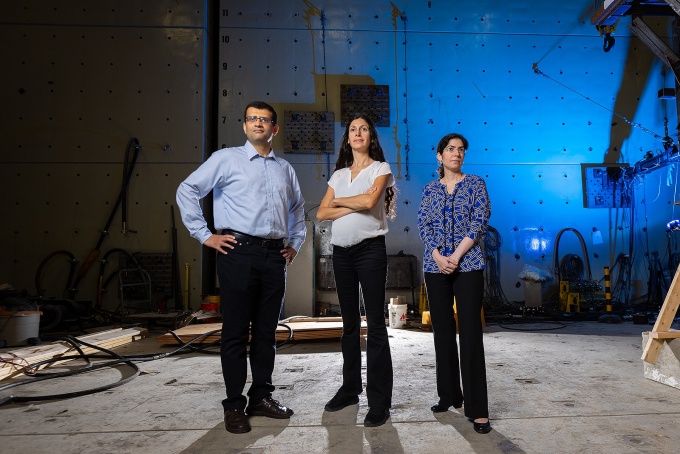Here is how we protect coastal cities from earthquakes
UB awarded $2 million to test Hawaiian structures near saltwater for earthquake risk

What happens when an earthquake hits a building already damaged from corrosion by saltwater? To answer that question, the National Science Foundation awarded $2 million over five years to a research team led by Pinar Okumus, associate professor in the Department of Civil, Structural and Environmental Engineering.
“A lot of research has been done on seismicity and salt corrosion separately,” says Okumus, principal investigator. “But very little has been done on how earthquakes affect buildings already damaged by saltwater.”
The researchers will assess the risks to buildings in Hawai’i and other regions with low-lying, coastal infrastructure. The project will involve the use of “test beds,” which are a way to apply findings to a site to demonstrate the potential impact. The site can be a real place or a virtual city that can be modified to represent features specific to select areas.
The project’s first phase will examine the physical characteristics of hazards and infrastructure: flood depth, frequency and duration; buildings of different types, including steel and concrete structures; buildings with different levels of corrosion; and the severity of seismic activity. The researchers will develop structural models of different building types and different levels of corrosion caused by salt, not just from seawater but also from the salt in the atmosphere near oceans.
Applying discoveries to Hawai'i
Hilo, a low-lying coastal city on the island of Hawai'i with a population of about 45,000, will be one of the test beds. A 5.0 magnitude earthquake occurred nearby in 2022.
Once the data is collected and research results are ready to be shared with the community, social scientists will engage stakeholders, including emergency planners and policymakers in Hilo, as well as residents and business owners. The researchers will suggest effective mitigation options.
“It might be as simple and inexpensive as painting a steel column, or more complicated, like adding new structural material,” says Okumus. “We want to work with local engineering firms. We even hope to work with the historical society; it has the records of these buildings.”
The second test bed will be virtual, based on a model developed by the National Institute of Standards and Technology.
“This means that our findings can be useful to people in any city,” says Okumus, including those in the Pacific Northwest and Puerto Rico.
Co-principal investigators from UB are Negar Elhami-Khorasani and Ravi Ranade, both associate professors in the Department of Civil, Structural and Environmental Engineering. Additional co-principal investigators include Oceana Francis, professor at the University of Hawai'i at Mānoa; and Rebekah Paci-Green, associate professor and chair of the Department of Environmental Studies at Western Washington University.

